After plastic surgery, there may be some side effects like swelling and bruising and one of the safest ways to protect yourself from these side effects is using a post-surgical body compression garment.
These garments are an essential part of post-surgical care because they help to speed up blood flow in the body and also flush harmful fluids out of the body during recovery.
Using post-surgical compression garments helps to quicken the healing process and make it as smooth and comfortable as possible.

Compression garments are used to aid the healing process, reduce the risk of infection, scarring, and swelling.
Keep reading to find out everything you need to know about wearing compression garments after plastic surgery.
What is a compression garment?
Compression garments are tight elastic materials or clothing used to aid the healing process, reduce the risk of infection, scarring, and swelling, and allow smooth recovery after surgery.
It supports the part of your body that’s weakened due to surgery. Compression garments come in different types and shapes each of which is suitable for a particular part of the body.
Why are compression garments used after plastic surgery?
Compression garments are used to reduce complications like swelling, blood clotting, and scarring after surgery; it helps the body heal quickly by compressing the body part the surgery was performed on; it also reduces the impact of damages that body movement can cause.
After a surgical procedure, some people feel pain with the slightest cough or movement. These movements can lead to the loosing of stitches, and tendons that have been altered during surgery.
Controlling this abrupt movement is crucial to having a successful recovery. Failure to use a garment properly can lead to a delay in healing and some cases cause long-term complications.
What are the procedures that need compression garments?
- Tummy tuck surgery: Tummy tuck or abdominoplasty is a major medical procedure that flattens the abdomen by removing excess fat and skin. It helps tighten the weakened muscles, makes the abdomen flatten and firm. After this procedure, you will be advised to use a surgical compression garment by your doctor for a faster recovery.
- BBL: A Brazilian but lift is a surgical procedure used to transfer fat from the hips, abdomen, thighs, and lower back to the buttocks using liposuction. It’s advisable to use a compression garment after a BBL procedure to accelerate the healing process.
- Breast augmentation surgery: Breast augmentation which is also known as augmentation mammoplasty, is a surgical procedure in which silicone and saline implants are placed under the breast tissues to increase the breast size, firmness, and shape. Compression garments after breast implants help to keep the implants in place for a safe healing process.
- Breast lift surgery: A breast lift which is also known as mastopexy is a medical operation used to lift, tighten, and reshape the breast by removing excess skin. It can also be used to change or reduce the size of the areolas (the circle around the nipples). Using a compression garment after a breast lift is crucial for a smooth recovery.
- Gynecomastia: Gynecomastia is a hormonal imbalance between androgen and estrogen that increases and enlarges the breast tissue in men. Gynecomastia surgery is a procedure that corrects this condition and reduces the size of male breasts. Wearing a compression garment after gynecomastia surgery is key to a fast recovery from the surgery.
- Liposuction: Wearing a compression garment after liposuction surgery decreases the post-op swelling and helps the body heal faster. The pressure that the garment puts on the skin also helps drain the accumulated fluid under the skin and prevent lumps and bumps after liposuction surgery.
Pros and cons of compression garments?
Pros
There are lots of advantages to using compression garments, typically these garments have been shown to help increase blood circulation, and helps reduce muscle fatigue, and help one to have a smooth recovery after surgery. The benefits of compression garments include:
- It quickens the healing process after a surgical procedure
- It reduces the risk of getting an infection.
- It allows smooth recovery with little or no complications.
- It eliminates swelling and also supports weak body parts.
- It helps to keep implants in place
- It helps to reduce pain and psychological distress.
- It reduces scarring and bruises.
- It helps in reducing inflammation.
Cons
Wearing compression garments can be uncomfortable at the beginning, it could cause rashes or other skin reactions. To help relieve this, use a compression garment that’s your size, not one meant for those with smaller body sizes. It’s strictly advisable to stick to the instructions of your doctor on what type of garment to wear. The downsides of compression garments are:
- It might make you feel uncomfortable
- You may develop rashes and other skin reactions
- It can cause itchiness
- It might find it difficult to breathe if it’s not worn properly.
How long should the compression garments be worn?
After surgery, your surgeon or specialist will tell you what kind of compression garment you’ll need to put on to speed up your recovery. Your compression garment will be chosen based on the kind of surgery you had. Typically, you’ll need to put on your compression garment for at least a month but make sure to ask your doctor as to how long you should wear a compression garment. It is advised to get at least two or more compression garments to have a spare to change because you’ll not be allowed to remove your compression garment even when you want to sleep, it should be worn all day except when you want to take a bath.
How to take care of your compression garment?
Washing your compression garment daily helps to keep and retain its elasticity, and also removes dirt and sweat.
- Hand washing: Wash your compression garment in warm water; do not scrub too hard; use a mild detergent and dry under natural sunlight.
- Washing Machine: When using the washing machine to wash your compression garment make sure it’s washed under a delicate cycle. Don’t use any fabric softener because it will reduce the elasticity of the garment.
- Instructions: Read and follow the instructions on how to care for and wash your compression garment on the label written by the manufacturer.
Types of compression garments and how to wear them?
We have different types of compression garments, exceptionally made to help the recovery process after surgery. The kind of surgery you had will determine the type of compression garment you should use.
Below are different types of compression garments:
- Surgical bras: Surgical bras usually look like sports bras. They are used for breast augmentation, breast reduction, breast lift, and breast reconstruction. Make sure that your surgical bra is worn properly; it should sit under your rib cage and it should be properly zipped, buckled, or hooked.
- Compression socks and stockings: Compression stockings or socks are made specially, they’re elastic and they’re comfy. It helps blood flow freely, it eases discomfort and swelling. Ensure you remove every piece of jewelry before putting on your compression socks so as not to snag or tear the material.
- Compression girdles: This garment covers the buttocks to the upper chest region. It is usually used after a liposuction or tummy tucks in the abdomen after the surgery. Put on the girdles properly and make sure it’s tight and it’s not twisted, then carefully hook or zip the girdles.
Conclusion
Compression garments are very useful, they help increase the circulation of the flow of blood, shorten post-operative recovery, keep down swelling and bruising, and relieve discomfort and pain. You need to contact your physician or specialist before using any type of compression garment and consult him/her about how and how long to wear your garment after surgery.


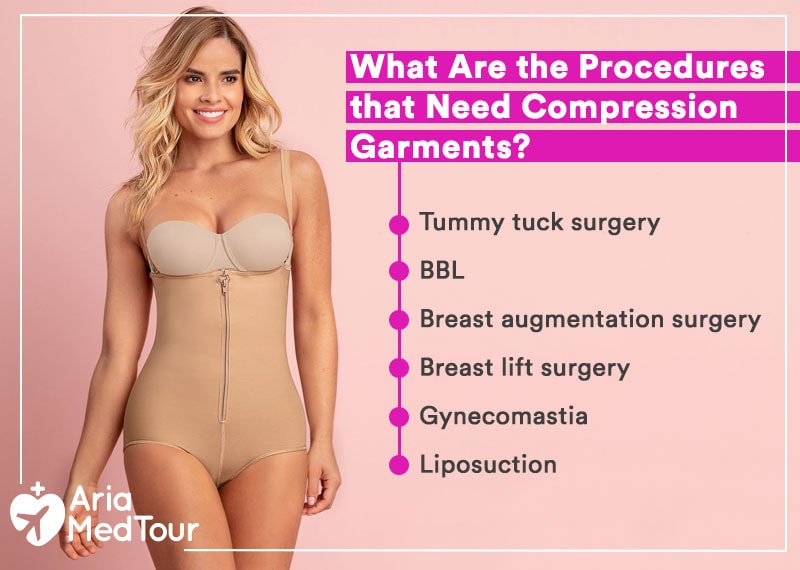
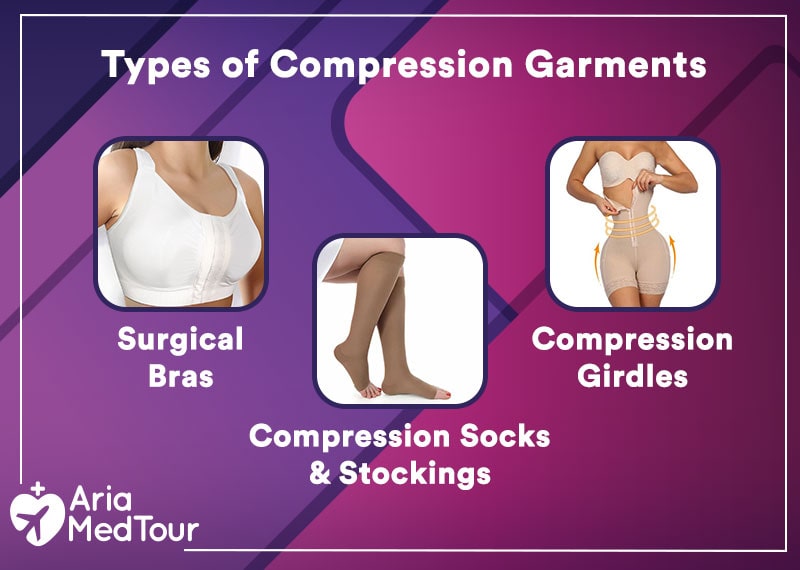

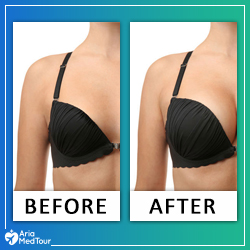

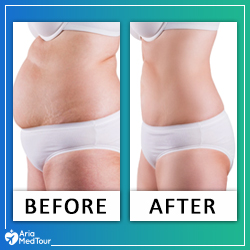

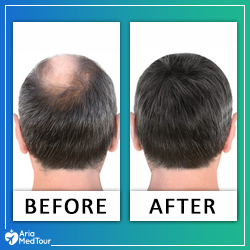










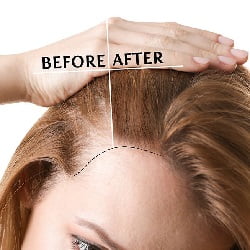




After my liposuction, my surgeon recommended wearing a compression garment after lipo, but I’m still unsure how important it really is. Is post surgical compression necessary for everyone, and how long should compression garments after liposuction be worn to see proper results?
Hi Emily! Great question. Post surgical compression plays a crucial role in reducing swelling, improving circulation, and helping the skin adapt to its new contour. Most surgeons strongly recommend compression garments after liposuction for several weeks, as they support healing and enhance final results. The exact duration depends on your procedure and individual recovery, so following your surgeon’s advice is key.
I understand the benefits, but I’ve also heard about the disadvantages of compression clothing. I recently developed a skin rash from compression garment use and it made me worried. Is this common, and should I stop wearing it?
Hi Daniel! Mild irritation or a skin rash from compression garment use can happen, especially if the garment is too tight or worn continuously without breaks. While there are some disadvantages of compression clothing, such as discomfort or skin irritation, these issues are usually manageable by ensuring proper fit, good hygiene, and breathable materials. If irritation persists, consult your surgeon before discontinuing the garment, as post surgical compression is still essential during early recovery.